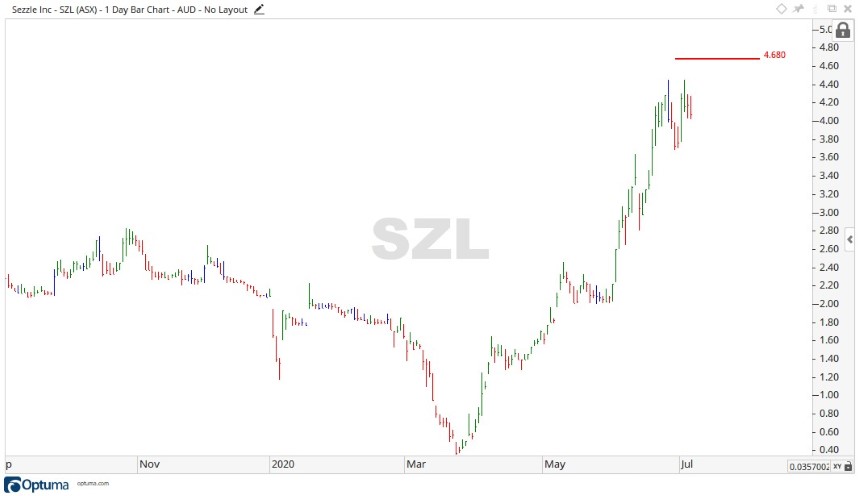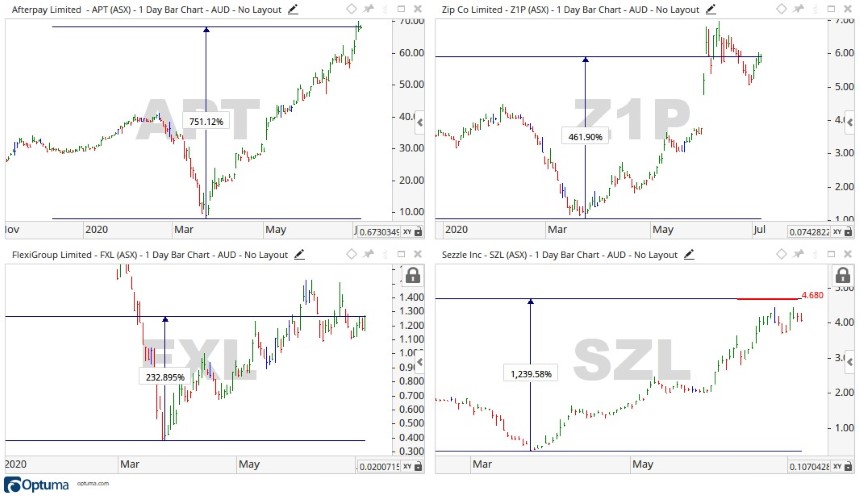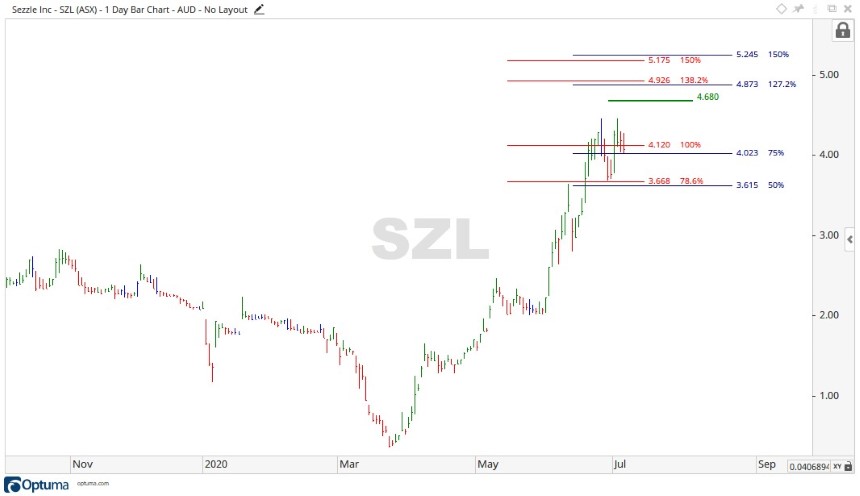The Minneapolis-based buy now pay later (BNPL) provider is setting a record pace in growth.
The SLR share price is trading at the all-time high of $4.68 at time of writing, tacking on 14.99% to the previous day’s trade.
Source: Optuma
Four Innovative Aussie Stocks that Could Shoot up During and after Lockdown
SZL share price in context of BNPL competitors
The pandemic created a unique situation for the BNPL sector. Home life became the new norm.
The knock-on effect of this is that people have been buying online, getting their goods delivered to their home and increasingly using BNPL to do so.
Below I look at the SZL share price compared to other ASX-listed BNPL providers.
Afterpay Ltd [ASX:APT], Zip Co Ltd [ASX:Z1P], Bundll — which is the offering from Flexigroup Ltd [ASX:FXL], and Sezzle Inc [ASX:SZL] have all recorded enormous growth in their share price, as you can be seen below.
Source: Optuma
Comparing the charts, SZL has experienced the most explosive share price growth, up over 1,200% from the March low in the Australian market.
This comes off the back of some impressive figures released in July 2020.
- Underlying merchant sales are up 58% quarter on quarter to US$188 million, which comes to AU$272.3 million, and a rise of 349% year on year
- Active Consumers up 28% quarter on quarter to 1.48 million and +243% year on year
- Active Merchants up 27% quarter on quarter to 16,112 and +219% year on year
‘In these uncertain times, we are fortunate to announce record Q2 results across a number of our key metrics,’ said Sezzle’s Executive Chairman and CEO Charlie Youakim.
Where next for the Sezzle share price?
Normal life seems a long way off, for now.
So the BNPL sector may have more room to run.
Source: Optuma
Looking at the SZL share price chart, it’s broken out to an all-time high.
Should this uptrend continue then the levels of $5.20 and $4.90 might provide future resistance.
On the downside, if prices were to retrace then the levels of $4.10 and $3.65 may come into focus.
On a final cautionary note, BNPL providers may eventually have to come to terms with consumers running out of discretionary spending money if economies continue to tank.
Something to keep your eyes peeled for in the data in the coming months.
Regards,
Carl Wittkopp,
For Money Morning




Comments